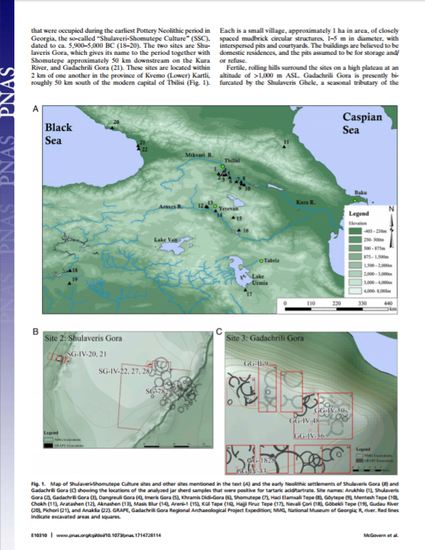
Chemical analyses of ancient organic compounds absorbed into the pottery fabrics from sites in Georgia in the South Caucasus region, dating to the early Neolithic period (ca. 6,000–5,000 BC), provide the earliest biomolecular archaeological evidence for grape wine and viniculture from the Near East, at ca. 6,000–5,800 BC. The chemical findings are corroborated by climatic and environmental reconstruction, together with archaeobotanical evidence, including grape pollen, starch, and epidermal remains associated with a jar of similar type and date. The very large-capacity jars, some of the earliest pottery made in the Near East, probably served as combination fermentation, aging, and serving vessels. They are the most numerous pottery type at many sites comprising the so-called “Shulaveri-Shomutepe Culture” of the Neolithic period, which extends into western Azerbaijan and northern Armenia. The discovery of early sixth millennium BC grape wine in this region is crucial to the later history of wine in Europe and the rest of the world.
This document was originally published in Proceedings of the National Academy of Sciences of the United States of America by National Academy of Sciences. Copyright restrictions may apply. doi: 10.1073/pnas.1714728114
Available at: http://works.bepress.com/michael_callahan/11/
